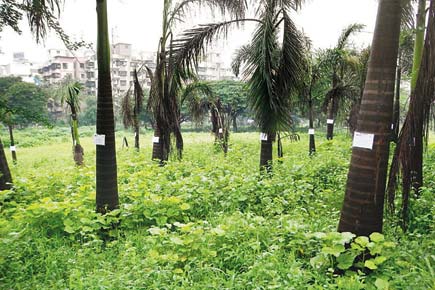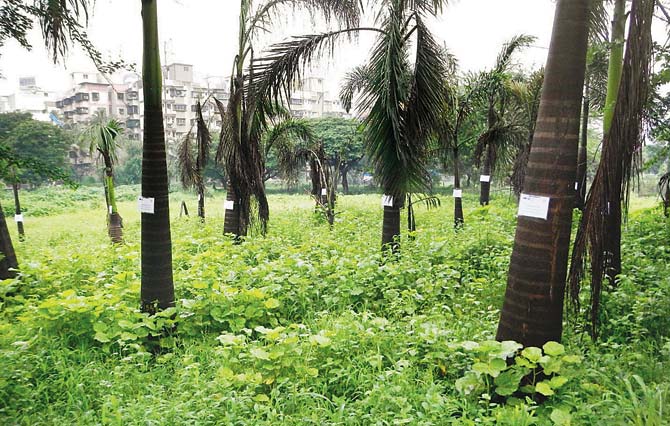It's better to nurture forests to break the monotony of structure, but the wilderness in Mumbai is seen only as a resource for more building


Aarey has long been a sore point for successive governments and developers. File pic
 Sitting far away in Dehradun, I read in this newspaper an admission by the CEO of Aarey Milk Colony that a contractor who works for the Mumbai Metro Rail Corporation acquired an illegal power connection for his container stall at the Metro III car shed. The power connection was stolen as a 'security measure' because of the presence of leopards. Earlier, MMRC officials had denied that there was any animal activity in the area.
Sitting far away in Dehradun, I read in this newspaper an admission by the CEO of Aarey Milk Colony that a contractor who works for the Mumbai Metro Rail Corporation acquired an illegal power connection for his container stall at the Metro III car shed. The power connection was stolen as a 'security measure' because of the presence of leopards. Earlier, MMRC officials had denied that there was any animal activity in the area.
ADVERTISEMENT
For months now, Mumbai has been embroiled in a fight over the car shed for a new leg of the Metro Rail project. Apparently, the only place it can come up is within the Aarey Milk Colony, for which some 4,000 trees must be cut down. The argument has become, predictably, between a 'pro-development" lobby and those who are 'loony' nature lovers. And also, between those who buy the argument that a mass public transport has several long-term benefits - including environmental - and those who do not count immediate environmental damage as security against future gains.
Aarey has long been a sore point for successive governments and developers. A buffer zone for the Sanjay Gandhi National Park, Aarey is part of an ecosystem that contains Mumbai's water reservoirs and provides essential green cover in an increasingly over-concretised and built-up city. I lived on the edge of Aarey for many years, and the selling point in those days was that since the area was a no-go for developers, we would always be safe. Since then, twiddling with laws has led to Aarey's own buffer zone being destroyed by mammoth apartment blocks.
That Mumbai's public transport system is overburdened and overstretched is a no-brainer. How far the Metro project is going to save Mumbai is another matter. The first leg was at best a supplemental to the rail and bus system, for routes that were not much covered by the first. Therefore, it is a pleasant add-on and not an essential. The assumption by gullible citizens was that Metro project are built underground, but the fact that Mumbai cannot sustain endless tunnels was not explained until a train rattled past your window.
The environmental impact of destroying Aarey, however, can be devastating to a city like Mumbai. Green cover is the city's lifeline to survival. Cutting down old forests and trees and replacing them with saplings elsewhere is not a fair deal, either for trees and the lives dependent on it, or for humans. The 'transfer of tree rights', which is allowed in cases like this, is just tokenism as far as the environment is concerned.
In the chapter entitled 'Street Kids' in his must-read The Hidden Life of Trees, forester Peter Wohlleben explains how urban trees cannot ever live up to their full life span and potential compared to forest trees. Everything is wrong, from heavily compacted soil to asphalt and transport fumes, to heat from traffic and concretised buildings, to lack of communication with other trees and assaults from animals and insects. Would it not be better for cities to have several small wild forests to break the monotony of structure, for both our benefit and that of the trees?
And yet, we have a forest and a wilderness in Mumbai that is seen only as a resource for more building.
The argument that a Metro railway alone is 'pro-development' is specious and dangerous. The effects of climate change are around us at all times, this monsoon being a constant example of the damage caused by high-intensity rainfall. At the same time, our groundwater resources, including the essential Indus acquifer, are being severely depleted. Wet bulb temperatures are rising across the globe - look forward to higher humidity together with higher temperatures. Is destroying Aarey going to help or hinder the larger quest for survival?
I started with Dehradun for a reason. Like all Indian cities, Dehradun also refuses to learn from the mistakes or the successes of others. New road works have ensured that all drains are either covered or filled up. The result is that this monsoon, main roads have become rivers, as rainwater moves downhill, looking for an outlet. People living on hitherto dry river beds, with political patronage, have suffered and died from floodwater.
The answer is, apparently, to plant more saplings by the side of a busy road to barely survive. That might soon become a metaphor for us.
Ranjona Banerji is a senior journalist. You can follow her on Twitter @ranjona. Send your feedback to mailbag@mid-day.com
 Subscribe today by clicking the link and stay updated with the latest news!" Click here!
Subscribe today by clicking the link and stay updated with the latest news!" Click here!







